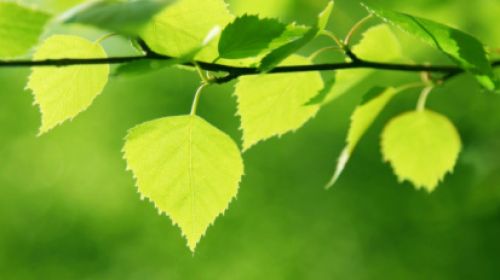In the case of inflammation of the kidneys (pyelonephritis), the majority of the mostly one-sided infection is in the kidney tissue. The funnel-shaped renal pelvis, in which the urine is collected, is also affected. Here you can find out more about the symptoms, causes, duration and treatment of pelvic inflammation.
- The urologist can use ultrasound to determine if the kidney is inflamed.
- © iStock.com/endopack
In most cases, inflammation of the kidney is caused by inflammation of the bladder (cystitis) that has migrated up the urinary tract to the kidneys (ascending urinary tract infection). The infection usually spreads to the kidney tissue, a pure renal pelvic inflammation without kidney involvement is called pyelitis.
Typical symptoms of pelvic inflammation
Those affected recognize acute kidney inflammation by a strong feeling of illness, fatigue, fever and kidney pain (knocking pain on the affected side of the body). The renal pelvis is rarely affected by the infection on both sides. In addition, urination is painful in pyelonephritis, and the urge to urinate is frequent and violent.
Chronic renal pelvic inflammation, on the other hand, has few or no symptoms or only causes unspecific symptoms emerged. Symptoms during relapses include gastrointestinal discomfort, high blood pressure, or weight loss.
An overview of the signs of acute pelvic inflammation:
general feeling of illness and fatigue
high fever (up to 40 degrees Celsius)
Chills (partially)
dull to attack-like back and / or flank pain that radiates into the pelvis
Discomfort when urinating (burning sensation, urgency, urination every ten minutes)
Racing heart
Nausea and vomiting, loss of appetite
acute cystitis preceding or accompanying pyelonephritis, with red urine
Symptoms of chronic kidney inflammation at a glance:
If the chronic renal pelvic inflammation remains undetected and thus untreated, the efficiency of the kidneys suffers. Renal insufficiency (kidney weakness) develops, which in the worst case makes dialysis necessary. Other complications include abscess formation and sepsis.
Causes and risk factors for pelvic inflammation
Pyelonephritis is a bacterial inflammation of the kidney tissue. The bacterium Escherichia coli is responsible for the infection in around 80 percent. E. coli normally lives in the gut. Other germs that can cause kidney inflammation belong to the genera Proteus, Klebsiella, Enterobacter, Pseudomonas, Serratia and Citrobacter.
Kidney inflammation is triggered by bacteria that usually enter the kidney tissue via the urinary tract. In most cases, bacterial infection of the kidney tissue occurs from the outside via the urethra and then ascending via the urinary bladder and ureter to the kidney. Inflammation of the kidney tissue caused by bacteria spreading through the bloodstream, on the other hand, is rarely the cause of kidney inflammation. Diseases of the urinary system with obstruction to the flow of urine favor the development of acute pelvic inflammation.
Favoring pre-existing conditions
The path of infection is usually ascending, that is, the pathogens are introduced from the outside via the urethra, into the urinary bladder, then via the ureters to the kidneys. This risk is particularly increased by:
Existing diseases in the urethral and bladder area (e.g. urethral constriction, bladder dysfunction): A drainage disorder results in so-called residual urine in the urinary bladder. This can lead to inflammation that can ascend into a ureter and then cause inflammation of the kidneys (pyelonephritis).
Existence of a bladder dysfunction: Incomplete emptying or weak bladder can lead to residual urine in the bladder. Residual urine promotes inflammation that can spread to the kidneys.
Sexual intercourse: There is a potential risk of pyelonephritis in women during sex. This danger arises from the anatomical conditions – in women, the urethral orifice is located near the anus, but also the vagina. The short urethra in women makes it easier for bacteria to get into the bladder, ureter and thus into the kidney, where they can trigger pelvic inflammation.
Carrying out medical examinations and treatments of the urinary tract (for example, uroscopy, bladder surgery): The risk of an ascending infection is rare. Despite sterile conditions, bacteria can cause an inflammatory disease of the renal pelvic system and kidney tissue (pyelonephritis) via the anatomical route (bladder – ureter – kidney).
Indwelling bladder catheters: In old age, the resistance of the mucous membranes of the urogenital tract decreases and indwelling bladder catheters that are in place encourage the migration of bacteria into the urinary tract. Indwelling bladder catheters can be used in older people who have a voiding disorder or urinary incontinence. Due to this danger of ascending infection, the medical indication of an indwelling urinary catheter has to be set very strictly.
Cystitis: Often the primary problem is acute cystitis. From there, the inflammatory process spreads via the ureter to the kidney.
Stones or urinary outflow disorder from the kidney: Other diseases of the urinary system, such as stones in the kidney, ureter or bladder, urine outflow disorder from the kidney and incomplete bladder emptying, promote the development of acute pyelonephritis.
Diagnosis of pelvic inflammation: this is what the doctor does
In order to determine inflammation of the renal pelvis, the attending physician mainly relies on a conversation with the person concerned (anamnesis) as well as a physical examination and a urinalysis. A blood test (for example blood sedimentation), ultrasound and / or X-ray examination are also suitable for diagnosis. Physical symptoms such as high temperature, knocking pain and tenderness substantiate the suspicion of kidney inflammation.
To confirm the diagnosis, a urine sample (midstream urine) is analyzed – first with a test strip and later in the microbiological laboratory. Typically, bacteria, white and red blood cells can be found in the urine of a kidney inflammation.
Ultrasound examination for inflammation of the renal pelvis
Urologists often perform an ultrasound scan to diagnose pelvic inflammation. On the recording, the specialist can see a possible urinary flow disorder (urinary obstruction) in the kidney area. It is triggered, for example, by a stone stuck in the ureter. In this case, a urine drainage must be provided immediately (for example through a so-called ureteral splint, renal fistula), as the bacterially infected urine in the renal pelvis cannot flow around the stone in the normal way. This obstacle to drainage can lead to serious complications such as an accumulation of pus in the tissue (abscess) and a life-threatening general infection (urosepsis).
In the area of the bladder, the ultrasound is used to check the emptying function. If the bladder is not completely emptied, the urine remaining in the bladder will be visible. The permanent damage or deformations caused by chronic inflammation of the renal pelvis can also be made visible with ultrasound.
Treatment of pelvic inflammation: which treatment makes sense?
Kidney inflammation is treated with an antibiotic, which in severe cases is administered via an infusion, otherwise as a tablet. The treatment lasts at least ten days and, even if there are no symptoms, must not be interrupted beforehand. Otherwise, there is a risk that the inflammation will come back and become chronic, because premature discontinuation of an antibiotic leads to the inflammation flaring up again and the formation of resistance in the bacteria: The drugs in question are then ineffective. As a rule, the pelvic inflammation treated with antibiotics lasts a few days to a maximum of two weeks until it has healed.
If necessary, the doctor may also administer antipyretic or anticonvulsant drugs – but never pain relievers, which could additionally damage the kidneys.
Additional measure for inflammation of the kidney pelvis
In addition to antibiotics, patients should ensure that they drink enough fluids (two to three liters). Bed rest and local application of heat subjectively bring rapid improvement in the symptoms of pelvic inflammation.
In principle, in the case of acute renal pelvic inflammation that can be traced back to a stone in the ureter, the stone in the ureter can be bridged with a ureteral splint – a thin tube that is inserted into the ureter through the urethra and bladder. The splint ensures that urine can drain freely.
If a congenital or acquired malformation in the urinary tract is to blame for a recurrent pelvic inflammation, the therapy can also include an operation. Constrictions in the ureter, for example, can easily be eliminated.
Preventing pelvic inflammation: How do I protect myself?
One of the main ways to prevent pelvic inflammation is to avoid a bladder infection, as it can rise and is the cause of pelvic inflammation in most cases. The simplest and most effective measure to prevent kidney inflammation is therefore to drink enough.
Women who are prone to bladder infections and are therefore at risk of kidney infections should also empty their bladder after sex to flush out the bacterial pathogens, and use the correct wiping technique when using the toilet (always from front to back to the bottom). The pathogens causing bladder and kidney infections almost always come from the intestines.
Because kidney inflammation is often caused by a delayed bladder infection (cystitis), it is so important not to treat urinary tract infections for too long and to see a doctor if the symptoms persist for days or if there is blood in the urine.


